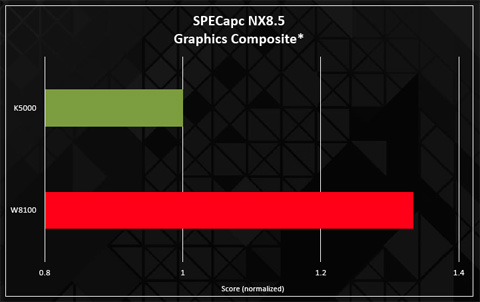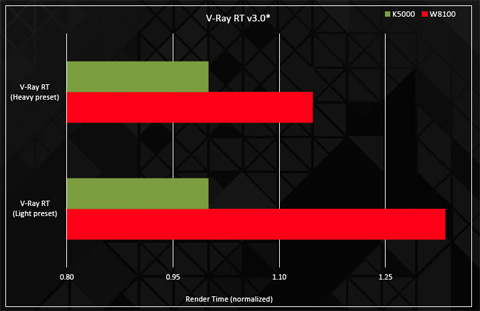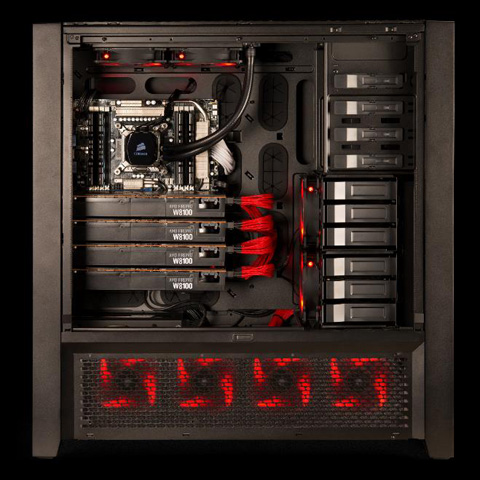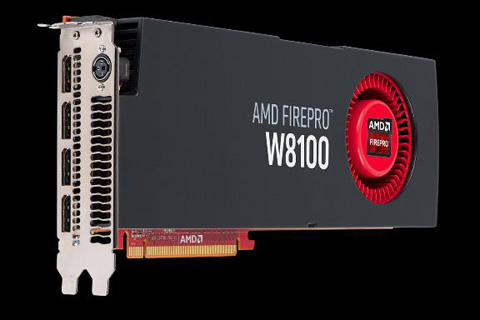
The AMD FirePro W8100, which features 8GB GDDR5 memory, can be used for high-end 3D graphics and GPU compute.
AMD has unveiled the FirePro W8100, an 8GB professional GPU for high-end CAD/CAM/CAE that follows on from the 16GB FirePro W9100.
The company has three types of design and engineering users in its sights: those that use a) high-end CAD, b) Computer Aided Engineering (CAE), or c) design visualization software – or, indeed, all three if you have a particularly complex product development workflow.
But we’re not just talking about throwing huge 3D models around on screen. AMD pitches the $2,495 FirePro W8100 as a versatile processor that can deliver advanced 3D graphics and GPU compute capabilities at the same time.
AMD says the FirePro W8100 can number crunch its way through a ray trace rendering or FEA simulation and still be responsive when you want to rotate your 3D CAD model on screen. The chip giant is also is keen to emphasize that this is in contrast to Nvidia who promotes Maximus, a multi GPU technology that features one GPU dedicated to graphics (Nvidia Quadro) and one or more dedicated to compute (Nvidia Tesla).
For 3D graphics AMD highlights the FirePro W8100’s ability to deliver advanced graphics on multiple displays – up to four displays at HD or 4K (30Hz) resolution and up to three displays at 4K (60Hz).
It also shouts about the FirePro W8100’s performance in high-end CAD applications, presenting benchmarks for Catia and NX that pit it against Nvidia’s comparatively priced Quadro K5000.
We don’t have much experience with CATbench, but have always found the SPECapc test to be a pretty good gauge of performance. See AMD’s published results below.

AMD’s Catia CATbench benchmark results: AMD FirePro W8100 vs Nvidia Quadro K5000

AMD’s SPECapc NX benchmark results: AMD FirePro W8100 vs Nvidia Quadro K5000
As far as compute is concerned the FirePro W8100 looks very impressive on paper: 4.2 TFLOPs of single precision performance (applicable to ray trace rendering) and 2.1 TFLOPs of double precision performance (a requisite for simulation).
While one can’t dispute its number crunching potential, FirePro has always been hindered by application support. AMD’s backing of the committee-driven OpenCL standard has meant adoption by CAD/CAM/CAE software developers has been slow, but the wheels are starting to turn.
Siemens is the most recent adoptee of OpenCL, last month adding support to NX Nastran 9.1. Together with Dassault Systemes (Simulia Abaqus) there are now two major CAE software developers backing the open compute standard, which can run on many different types of processors. We expect more to follow. For ray trace rendering there’s V-Ray RT.

AMD’s V-RAY RT ray trace render benchmark results: AMD FirePro W8100 vs Nvidia Quadro K5000
While AMD is primarily pitching the AMD FirePro W8100 as a versatile workstation-class GPU, the technology is eminently scalable. Up to four cards can be fitted inside a single AMD Ultra workstation, resulting in up to 16.8 TFLOPS of single precision and 8.4 TFLOPS of double precision performance, an awful lot of processing power for a desktop machine. Or, if powerwall graphics is your thing, up to four 4K displays per GPU (up to 16 displays in total).

An AMD Ultra Workstation packed out with four FirePro W8100 GPUs
In terms of spec The AMD W8100 is a small step down from the FirePro W9100.
• 8GB GDDR5 memory compared to 16GB
• 2,560 stream processors compared to 2,816
• 4 mini DisplayPorts compared to 6.
• 4.2 TFLOPS of single precision performance compared to 5.24
• 2.1 TFLOPS of double precision performance compared to 2.62
However the price is also easier to swallow: $2,495 compared to $3,995.
The card will be available from July – in workstations from Tier One workstation and specialist manufacturers including HP, Dell, Armari, Workstation Specialists and Scan, and for user upgrades.
We look forward to test-driving it soon.
For more info on GPU compute, read DEVELOP3D’s in-depth article






